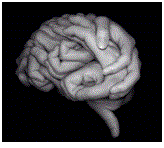Neuroplasticity:
Reference:1. Merzenich, et al (1984). “Somatosensory Cortical Map Changes Following Digit Amputation in Adult Monkeys”. Journal of Comparative Neurology 224 (4): 591?605. 2. Draganski et al. “Temporal and Spatial Dynamics of Brain Structure Changes during Extensive Learning” The Journal of Neuroscience, 7 June 2006, 26(23):6314-6317 3. Apkarian et al. (2004). “Chronic back pain is associated with decreased prefrontal and thalamic gray matter density”. J Neurosci 24 (46): 10410?10415
“Neurons that fire together, wire together”
The fundamental principle of neuroplasticity is that individual synapses within the brain are constantly being removed or recreated, largely dependent upon how they are used (or not used).
In 1984 researchers amputated the third digit (D3) of a monkey?s hand and discovered that after 2 months, the cortical map changed. The cortical space originally reserved for D3 became occupied by the neighbouring D2 and D4. 1
Neuroplasticity continues to be extensively studied on animals and humans. Brain imaging studies on medical students have shown that post-exam, they have significantly increased gray matter in their parietal cortex when compared to pre-exam period. 2
On the other hand those coping with chronic back pain have been shown to have changes in their homunculus and reduced gray matter in their prefrontal cortex and thalamus.3
Posted on: July 03, 2015
Categories: Fascinating Pain Studies


